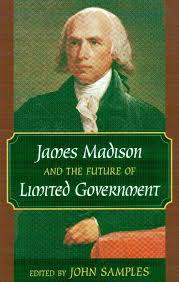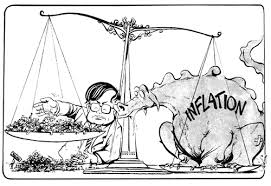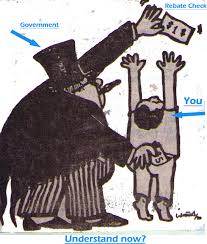The Becker-Posner Blog (http://www.becker-posner-blog.com/) features the economic point-counter point discussions of Gary Becker and Richard A. Posner.
Gary Becker is University Professor Department of Economics and Sociology Professor, Graduate School of Business at the University of Chicago. He was awarded the Nobel Memorial Prize in Economic Sciences in 1992 and received the United States Presidential Medal of Freedom in 2007. He is currently a Rose-Marie and Jack R. Anderson senior fellow at Stanford University’s Hoover Institution. His homepage is found here.
Richard A. Posner is a legal scholar and Federal Judge on the United States Seventh Circuit Court of Appeals, and Senior Lecturer, University of Chicago Law School. His home page is found here.
************
Following is and excerpt from Gary Becker’s latest post (12/16/2012) on “The Unemployment Rate and Central Bank Policy“, posted at the following web address:
http://www.becker-posner-blog.com/2012/12/the-unemployment-rate-and-central-bank-policy-becker.html
The Unemployment Rate and Central Bank Policy-Becker
Low inflation and “full” employment have been statutory goals of the Federal Reserve for the past 35 years. Often, however, inflation received the most attention, as when former Fed chairman Paul Volcker in the early 1980s sharply raised interest rates and put the economy in recession in order to wring inflationary expectations out of the system.
On December 12th, Ben Bernanke, the chairman of the Fed, indicated that the Fed would pursue what one might think is simply a variant of the full employment target by keeping nominal interest rates close to zero until the US unemployment rate dips below 6.5%-it is currently 7.7%- or until inflation is forecast to exceed 2.5%. The challenge facing this proposal is that while an unemployment rate target may seem to be just the flip side of the full employment target, unemployment can be nudged by other government policies in ways that have little effect on employment.
The present high level of unemployment in the US in good measure reflects the slow rate of recovery of real GDP and employment from its recession levels. According to “Okun’s Law”, the recovery in employment from a recession is simply related to the recovery in real GDP (see the discussion of Okun’s Law in my blog post on 11/4/2012). Okun’s Law implies that a central bank can use the recovery in real GDP as a proxy for the recovery in employment toward a full employment goal.
……
The complication is that changes in unemployment rates during business cycles are not just mirror images of changes in employment rates. This has been especially the case during the Great Recession. By definition, the unemployed equals the difference between the number of persons in the labor force and the number of persons working. The unemployment rate is then defined as the number of individuals who are unemployed as a fraction of the labor force. It follows from the definition of unemployment that the unemployment rate equals one minus the employment rate (the ratio of the number of persons employed to the number of persons in the labor force). This relation shows that changes in the unemployment rate would be equal to but opposite in sign to changes in the employment rate only as long as the labor force remained fixed.
During business cycles, the employment rate and the unemployment rate do move in opposite directions, but the relation is far from one to one, especially during severe recessions. The reason is that the labor force also changes over the course of a business cycle. Especially during severe recessions, some workers get discouraged about finding jobs and leave the labor force. This would tend artificially to reduce the unemployment rate even when both employment and unemployment did not change. This is why the official unemployment rate is usually supplemented with measures of the “total” unemployment rate that include both individuals who got discouraged and withdraw from the labor force, as well as those working part time because they could not find full time jobs. This total unemployment rate now stands at 14.4%, much above the 7.7% official rate.
…..
The unemployment rate is also affected by policies that affect eligibility for unemployment compensation, such as the extension of unemployment benefits during this recession to 99 weeks. Such an extension increases unemployment because it encourages individuals to become or remain unemployed in order to collect unemployment benefits for a longer time. The net effect of extensions in unemployment benefits is to increase the unemployment rate differently from any decline in the employment rate.
…..
A major risk of trying to implement an unemployment target through present Fed policies is that the inflation rate could increase in a futile attempt to bring down further the unemployment rate to a targeted rate, as happened in the 1970s. To its credit, the Fed protected against this possibility by setting its target at a relatively high unemployment rate of 6.5%, even though the rate prior to the onset of the recession in 2007 was well under 5%. The Fed also directly faced the risk of creating excessive inflation by setting its target as no more than 6.5% unemployment only as long as the inflation rate does not rise about 2.5%, a modest rate of inflation.





























